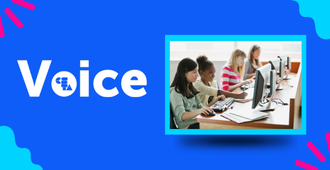Written by: Ashly Tritch and Dr. Alexandra Holter
The Computer Science Teachers Association (CSTA) is more than just a network of educators; it’s a vibrant community that celebrates diversity, champions inclusivity, and drives innovation in computer science (CS) education. As CSTA members, we’ve witnessed firsthand how our collective mission shapes environments where every student can envision themselves thriving in the CS landscape, fostering curiosity, growth, and problem-solving skills that are essential in today’s tech-driven world.
This summer’s CSTA Conference proved impactful, bringing together K-12 educators, post-secondary educators, vendors, and CS enthusiasts. We leveraged our conference connections when we got home and were confronted with a middle school challenge.
Our specific challenge in Bloomington Public Schools emerged when we returned from the conference and this year realized we had a unique cohort of 6th graders ready to transition from block-based coding, like Scratch, to text-based coding, like Python. These students, who have been immersed in CS since kindergarten, have mastered block coding but aren’t quite ready for the more complex high school-level programming environments. We needed a platform and pedagogy that would be developmentally appropriate and accessible for 6th graders, allowing them to make this critical transition.
That’s when the CSTA community’s collaborative power was leveraged. We reached out to the connections developed at the conference and those in our chapter who brought a wealth of knowledge and insight to our challenge:
- Jen Rosato, Director of the Northern Lights Computing Collaborative
- Kate Lockwood, President of CSTA MN
- Ryan Dehmoubed from JuiceMind
- Brad Haugen from Code Savvy
- Andy Teipen from Code.org
Their guidance was instrumental in identifying platforms and strategies that could help us find solutions.
Through these collaborations, we explored several promising options:
- PencilCode: Able to explore professional programming languages using an editor that lets students work in either blocks or text. Students could create art, music, games, and stories.
- Raspberry Pi Foundation: Introduction to Python: Simple introduction to Python. Also, we enjoyed playing with the Code Editor.
- JuiceMind: JuiceMind Teams interface serves as a web-based IDE replacement to Replit. A notable feature for middle school students, includes coding assignments in “Block Coding – Python.”, where students can see both block coding and text coding (like Python) side by side.
- Quorum Studio: Designed with accessibility in mind, Quorum is fully screen reader compatible, though it’s more suited for non-Chromebook environments.
- Strype: A free Python editor that combines the strengths of blocks and text programming into frame-based editing: write Python code in your browser with structured support.
- Tynker: Provides JavaScript and Python courses specifically geared toward middle school students with limited CS experience.
- Code.org: Huge curriculum catalog with resources for students and educators.
Beyond tools, we delved into pedagogical strategies. Concepts like hugging and bridging—drawn from research on learning transfer—offer ways to help students make meaningful connections between block-based and text-based coding. Additionally, creating language references that include both block and text representations, similar to those in the College Board’s AP CSP exam, helps students visualize and understand the relationships between the two coding paradigms.
While we haven’t settled on the perfect solution yet, the incredible problem-solving power of the CSTA community has brought us much closer to ensuring our 6th-grade students have the tools they need to continue on their CS path. The collaborative spirit of the CSTA community exemplifies how educators, industry professionals, and organizations can come together to create meaningful change.
This journey showcases the importance of networks like CSTA in advancing CS education. By leveraging diverse expertise, sharing resources, and fostering a spirit of innovation, we’re building a foundation that will empower the next generation of computer scientists and digital citizens.
Together, we are crafting a future where every student can see themselves as part of the CS world, equipped with the skills and confidence to thrive in an increasingly digital landscape. This is the power of the CSTA community—a force that transforms challenges into opportunities and individual efforts into collective progress.
About the Authors

Alexandra Holter is a Computer Science Coordinator, K-12, for Bloomington Public Schools in Bloomington Minnesota. She has been an educator for the past 14 years. Her career started in Tulsa Oklahoma where she obtained her BA and Masters of Science in Mathematics and Science Education. Then she first taught her first class of 7th grade science and has been committed to eliminating young people’s barriers to STEM ever since. In 2015 she completed her Ph.D.in Educational Leadership and Policy Studies from Oklahoma State University. In her current role she supports K-12 teachers and schools with building their individual and site level CS capacity so that CS really can be for all. She is a current member of the CSTA Policy Committee, CSTA Editorial Board, and SciMathMN Board Member.

Ashly Tritch is a middle school computer science educator with over 11 years of experience. She is a key contributor to Minnesota’s first computer science immersion program, where she engages students with innovative teaching methods. Ashly excels at inspiring perseverance and problem-solving skills in her students. An alumna of the College of Benedict, she brings a strong foundation of education and values to her classroom.

